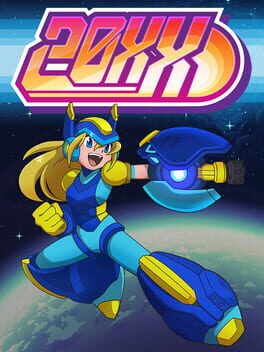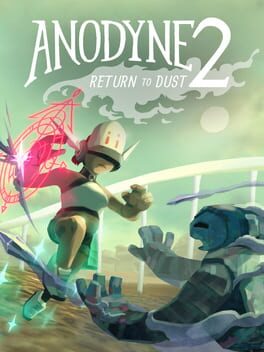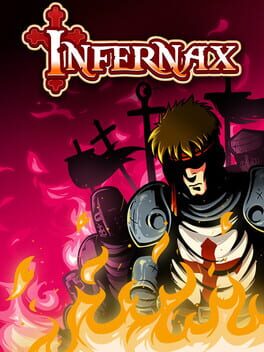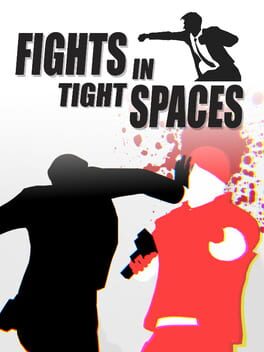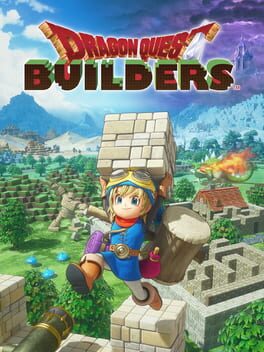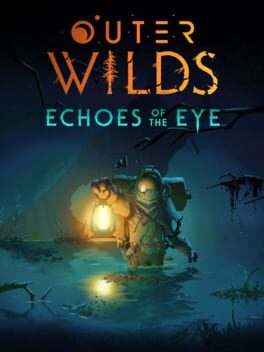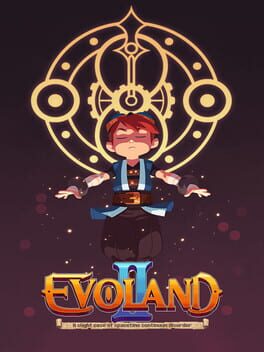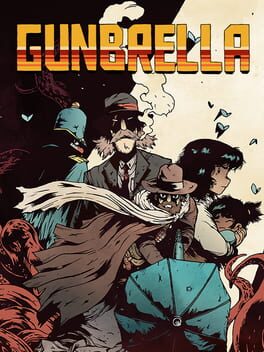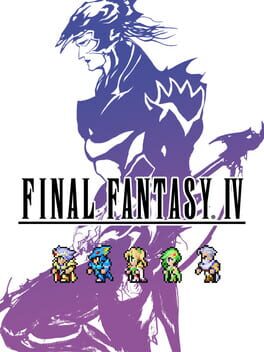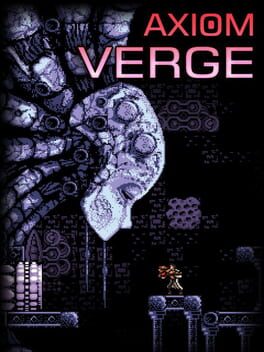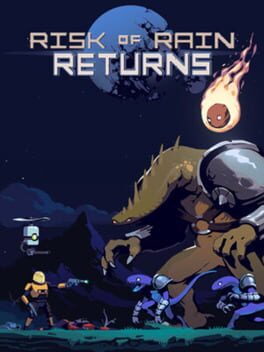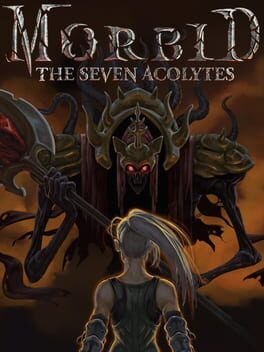AlexTheGerman
2017
Pros:
+ combining Mega Man with roguelike design is a great idea
+ the controls are tight enough
+ pickups are varied and seriously change up the gameplay
+ meta-upgrades significantly reduce the general level of difficulty
+ different characters play very differently
+ boss weapons significantly change up the moment-to-moment gameplay
+ level select after boss fights offers tactical choices
+ boss weakness system is copied from the Mega Man games
+ difficulty of stages and bosses scales naturally over the course of a run
Cons:
- controlling various boss weapons at the same time can get a bit confusing
- proceedural level generation can lead to unfair platforming challenges
- challenge rooms are exceedingly difficult and one-try only
- the action frequently becomes confusing due to effects clutter
- movement and jump upgrades feel necessary for a sucessful run
- the music and sound effects are unremarkable
- the animation style feels a bit off
- the final boss is unique but not that fun to fight
Magic Moment: Finally finishing that challenge room that you attempted a dozen times to find the double jump upgrade.
Playtime: 3,5 hours for one playthrough with the main character on Normal diffculty. 18 hours for all characters with some attempts at the highest difficult.
Verdict:
The aesthetics might be an acquired taste to some, but any fan of classic Mega Man action will find plenty to enjoy here. The roguelike elements fit well into the structure of a 2D action game, and the meta-upgrades are motivating enough to want to got for just another run. And what more can you really ask for in a game like this?
Play it and look forward to the full release of the sequel like me.
+ combining Mega Man with roguelike design is a great idea
+ the controls are tight enough
+ pickups are varied and seriously change up the gameplay
+ meta-upgrades significantly reduce the general level of difficulty
+ different characters play very differently
+ boss weapons significantly change up the moment-to-moment gameplay
+ level select after boss fights offers tactical choices
+ boss weakness system is copied from the Mega Man games
+ difficulty of stages and bosses scales naturally over the course of a run
Cons:
- controlling various boss weapons at the same time can get a bit confusing
- proceedural level generation can lead to unfair platforming challenges
- challenge rooms are exceedingly difficult and one-try only
- the action frequently becomes confusing due to effects clutter
- movement and jump upgrades feel necessary for a sucessful run
- the music and sound effects are unremarkable
- the animation style feels a bit off
- the final boss is unique but not that fun to fight
Magic Moment: Finally finishing that challenge room that you attempted a dozen times to find the double jump upgrade.
Playtime: 3,5 hours for one playthrough with the main character on Normal diffculty. 18 hours for all characters with some attempts at the highest difficult.
Verdict:
The aesthetics might be an acquired taste to some, but any fan of classic Mega Man action will find plenty to enjoy here. The roguelike elements fit well into the structure of a 2D action game, and the meta-upgrades are motivating enough to want to got for just another run. And what more can you really ask for in a game like this?
Play it and look forward to the full release of the sequel like me.
I couldn't even bring myself to playing this in earnest: I greatly dislike the look, the controls feel wobbly, the writing feels overdone from the get-go, and offering only few 2D sequences feels like a disconnect from why people played the first one.
Also, I'm really not a fan of this recent trend of 2D games changing perspective and sometimes even genre with the sequel, and Anodyne 2 is no exception. Now that indie developers have the technology to emulate the ugly, washed out graphic style of the PS1, playing a game like this feels like a step backwards instead of forwards.
Most egregiously, though, starting the game with a direct message from the makers that literally explain the themes of the game you are about to play is a graceless, one might say tasteless decision even, and one that made me quit the game immediately.
Maybe one day, there will be a proper sequel to Anodyne. I'll be there.
Also, I'm really not a fan of this recent trend of 2D games changing perspective and sometimes even genre with the sequel, and Anodyne 2 is no exception. Now that indie developers have the technology to emulate the ugly, washed out graphic style of the PS1, playing a game like this feels like a step backwards instead of forwards.
Most egregiously, though, starting the game with a direct message from the makers that literally explain the themes of the game you are about to play is a graceless, one might say tasteless decision even, and one that made me quit the game immediately.
Maybe one day, there will be a proper sequel to Anodyne. I'll be there.
2022
Pros:
+ it's more Dark Souls
+ incredibly realized gameplay loop of exploration, combat, item collecting and leveling up
+ the open world is huge, intricately designed, constantly surprising and changes over time
+ most environments and biomes tell a story and converge in a believable, lived-in world
+ the visual design is outstanding and the atmosphere is involving
+ architecture and dungeon design are on par with the best of the series
+ hub area is small but effective and a counterbalance to the open world
+ huge draw distance makes identifying items, buildings and enemies from a distance possible
+ lack of loading zones gives the overworld a unified appeal
+ progress on the overworld is not tied to specific routes or boss battles
+ sites of grace serve a triple function as waypoints, save zones and guiding lights
+ large variety of playstyles, builds and character customization options
+ combat feels difficult but fair, with perfect hitboxes and feedback
+ Ashes of War and Summoning Bells are smart additions that deeply affect combat
+ Flask of Wondrous Physick provides fresh options for approaching challenges
+ huge amount of diverse loot to collect at every turn
+ new gameplay elements such as sneaking and jumping liven up the DS formula
+ anti-frustration features are welcome additions: tool tips, stamina system, Stakes of Marika etc.
+ compass and map are necessary and helpful tools for traversal
+ items can be picked up from the horse
+ most of the jank and physics issues from previous entries have finally been fixed
+ dynamic soundtrack adequately accentuates each moment
+ most boss battles feel grand and carry true weight
+ NPCs are beautifully voiced and designed with great care ...
Cons:
- ... but their quests, journeys and arcs often seem random and lead to narrative dead-ends
- the obfuscating storytelling is still a hot mess that you either hate or love
- late game progress makes completing most quests impossible without warning
- reused assets, systems, weapons and enemies make the world feel smaller than it is
- controls are frequently cumbersome, especially two handing and swapping weapons on horseback
- legacy dungeons feel small and simpler in comparisons to previous Souls games
- catacomb dungeons and caves are copy-pasted and lack identity
- Great Rune system provides new gameplay options but is explained badly
- enemy attacks clipping through walls is still present after all these years
- invisible floors (and walls) fly against the logic of the architecture design
- overworld teleporters seem misplaced and make the overworld seem less coherent
- map and crafting menu cannot be accessed while in combat
- crafting system is inconsequential to the game at large
- item management is still pretty cumbersome and time consuming
- poise stat has practically no effect on gameplay and makes some builds unviable
- horse mechanics are clumsy: health cannot be checked, boost is useless, gravity deaths are frequent
- horseback combat is overpowered and trivializes most overworld challenges
- boss fights suffer from input reading and short reaction times (see Joseph Anderson on this)
- not all builds are viable with all late-stage bosses (such as Malenia)
- soundtrack can get annoying with its near-constant epicness
- final stretch of areas overstays its welcome and feels overlong
- final bosses are underwhelming compared to their peers
- ending sequences feel like afterthoughts and not adequate considering the hard work they required
Playtime: 130 hours for one playthrough. Single player only, with all main bosses and almost all optional bosses killed.
Build: Dexterity build with some bestial incantations and my trusty crossbow.
Best Boss Fights: Radahn, for its apocalyptic feel and huge stage. Astel, for its grandiose attacks.
Worst Boss Fights: Any repeating ones, especially Godskin and Dragonkin soldiers.
Best Area: Miquella's Haligtree. A true successor to the best dungeons of the series.
Best Ashes: Marionette Soldiers, my best buddies throughout the game.
Verdict:
With Elden Ring, FromSoftware once again defend their title of one the best studios around and releases another incredible addition to their roster of action RPGs. As an open world action game, its breadth and width is remarkable, with a constantly motivating gameplay loop that emphasizes exploration and the constant struggle between risk and reward. The overworld is a giant, complex area with surprises and secrets at every turn and undoubtedly stands among the best ever created. The possibilities of approaching bosses and dungeons are effectiveley endless, thanks to a wide range of physical and magical combat options that make diverse builds possible. As an RPG and an epic journey through a war-torn world, however, the game shares all of the problems that plagued the Souls series since its inception: it not only suffers from weak, unclear quest design with obfuscating dialogue, but also from fragmented storytelling and unsatisfying, abreviated endings. Even though some of the characters and their designs are memorable, their journeys seldom intersect with the players' in meaningful or comprehensible ways, and watching hours of explanation videos should not be mandatory to fully enjoy the arcs of NPCs or the story of a game.
However, beyond any mere criticisms of its gameplay and narrative design, the impact of Elden Ring on the industry and its practices cannot be understated. FromSoftware again proves that games can still be fully realized, complete works of art and entertainment without reaching into players' pockets at every turn, and for that alone, it should be recognized and cherished. Play it, love it, hope for a DLC.
+ it's more Dark Souls
+ incredibly realized gameplay loop of exploration, combat, item collecting and leveling up
+ the open world is huge, intricately designed, constantly surprising and changes over time
+ most environments and biomes tell a story and converge in a believable, lived-in world
+ the visual design is outstanding and the atmosphere is involving
+ architecture and dungeon design are on par with the best of the series
+ hub area is small but effective and a counterbalance to the open world
+ huge draw distance makes identifying items, buildings and enemies from a distance possible
+ lack of loading zones gives the overworld a unified appeal
+ progress on the overworld is not tied to specific routes or boss battles
+ sites of grace serve a triple function as waypoints, save zones and guiding lights
+ large variety of playstyles, builds and character customization options
+ combat feels difficult but fair, with perfect hitboxes and feedback
+ Ashes of War and Summoning Bells are smart additions that deeply affect combat
+ Flask of Wondrous Physick provides fresh options for approaching challenges
+ huge amount of diverse loot to collect at every turn
+ new gameplay elements such as sneaking and jumping liven up the DS formula
+ anti-frustration features are welcome additions: tool tips, stamina system, Stakes of Marika etc.
+ compass and map are necessary and helpful tools for traversal
+ items can be picked up from the horse
+ most of the jank and physics issues from previous entries have finally been fixed
+ dynamic soundtrack adequately accentuates each moment
+ most boss battles feel grand and carry true weight
+ NPCs are beautifully voiced and designed with great care ...
Cons:
- ... but their quests, journeys and arcs often seem random and lead to narrative dead-ends
- the obfuscating storytelling is still a hot mess that you either hate or love
- late game progress makes completing most quests impossible without warning
- reused assets, systems, weapons and enemies make the world feel smaller than it is
- controls are frequently cumbersome, especially two handing and swapping weapons on horseback
- legacy dungeons feel small and simpler in comparisons to previous Souls games
- catacomb dungeons and caves are copy-pasted and lack identity
- Great Rune system provides new gameplay options but is explained badly
- enemy attacks clipping through walls is still present after all these years
- invisible floors (and walls) fly against the logic of the architecture design
- overworld teleporters seem misplaced and make the overworld seem less coherent
- map and crafting menu cannot be accessed while in combat
- crafting system is inconsequential to the game at large
- item management is still pretty cumbersome and time consuming
- poise stat has practically no effect on gameplay and makes some builds unviable
- horse mechanics are clumsy: health cannot be checked, boost is useless, gravity deaths are frequent
- horseback combat is overpowered and trivializes most overworld challenges
- boss fights suffer from input reading and short reaction times (see Joseph Anderson on this)
- not all builds are viable with all late-stage bosses (such as Malenia)
- soundtrack can get annoying with its near-constant epicness
- final stretch of areas overstays its welcome and feels overlong
- final bosses are underwhelming compared to their peers
- ending sequences feel like afterthoughts and not adequate considering the hard work they required
Playtime: 130 hours for one playthrough. Single player only, with all main bosses and almost all optional bosses killed.
Build: Dexterity build with some bestial incantations and my trusty crossbow.
Best Boss Fights: Radahn, for its apocalyptic feel and huge stage. Astel, for its grandiose attacks.
Worst Boss Fights: Any repeating ones, especially Godskin and Dragonkin soldiers.
Best Area: Miquella's Haligtree. A true successor to the best dungeons of the series.
Best Ashes: Marionette Soldiers, my best buddies throughout the game.
Verdict:
With Elden Ring, FromSoftware once again defend their title of one the best studios around and releases another incredible addition to their roster of action RPGs. As an open world action game, its breadth and width is remarkable, with a constantly motivating gameplay loop that emphasizes exploration and the constant struggle between risk and reward. The overworld is a giant, complex area with surprises and secrets at every turn and undoubtedly stands among the best ever created. The possibilities of approaching bosses and dungeons are effectiveley endless, thanks to a wide range of physical and magical combat options that make diverse builds possible. As an RPG and an epic journey through a war-torn world, however, the game shares all of the problems that plagued the Souls series since its inception: it not only suffers from weak, unclear quest design with obfuscating dialogue, but also from fragmented storytelling and unsatisfying, abreviated endings. Even though some of the characters and their designs are memorable, their journeys seldom intersect with the players' in meaningful or comprehensible ways, and watching hours of explanation videos should not be mandatory to fully enjoy the arcs of NPCs or the story of a game.
However, beyond any mere criticisms of its gameplay and narrative design, the impact of Elden Ring on the industry and its practices cannot be understated. FromSoftware again proves that games can still be fully realized, complete works of art and entertainment without reaching into players' pockets at every turn, and for that alone, it should be recognized and cherished. Play it, love it, hope for a DLC.
2019
Pros:
+ puzzle design in the veign of Heart of Darkness
+ moody color palette
+ multiple playable characters too keep gameplay fresh
+ large variety of context-sensitive animations
+ fitting sound design and music
+ multi-perspectival approach to the narrative
Cons
- glitches may hinder progress
- merciless platforming
- no hint system
- busy visual space with no indicators for interactions
- intransparent morality choices
- interface taken over from mobile release
- invisible collectibles with little incentive
- short runtime (which might be a plus)
Weird Moment(s): When you push a cat down accidentally and plunge her into an identity crisis, only to find out that you saved her from death.
Verdict: You can tell that the creators were in this with their heart and have a story to tell, but the difficulty and intransparent interactions made me abandon this. Also, you are never quite sure whether progress is hindered by glitches or an obscure puzzle that you can't figure out. The lack of a hint system then drives you to watch a YT Let's Play - which you might be better off watching anyway.
+ puzzle design in the veign of Heart of Darkness
+ moody color palette
+ multiple playable characters too keep gameplay fresh
+ large variety of context-sensitive animations
+ fitting sound design and music
+ multi-perspectival approach to the narrative
Cons
- glitches may hinder progress
- merciless platforming
- no hint system
- busy visual space with no indicators for interactions
- intransparent morality choices
- interface taken over from mobile release
- invisible collectibles with little incentive
- short runtime (which might be a plus)
Weird Moment(s): When you push a cat down accidentally and plunge her into an identity crisis, only to find out that you saved her from death.
Verdict: You can tell that the creators were in this with their heart and have a story to tell, but the difficulty and intransparent interactions made me abandon this. Also, you are never quite sure whether progress is hindered by glitches or an obscure puzzle that you can't figure out. The lack of a hint system then drives you to watch a YT Let's Play - which you might be better off watching anyway.
2022
Pros:
+ a respectful homage to the glory 8-bit days
+ fitting art style with nasty gore effect
+ awesome full-screen splash pages
+ a wide variety of spells and upgrades
+ combat system is tough but fair
+ context-specific death animations ...
Cons
- ... that take entirely too long to skip
- too tough in the beginning, too easy in the end
- unskippable day/night sequence
- enemies spawn in architecture
- keys are not tied to dungeons and can become an issue
- quest log is basically useless; no quest markers on NPCs
- major quests and final boss locked behind morality system
- morality system is too obscure and without indicators
- enemies' and items' hitboxes are wonky
- camera is not movable downwards or upwards
- platforming challenges are often unfair
- weak dungeon design with superfluous objects, platforms etc.
- missing checkpoint system makes leaving dungeons to save necessary
- bosses are boring and can be tanked easily
- INNs are copy pasted and mostly useless
- weak writing with inconsistent voice and tenor
- dialogue in general is not context-specific
- role-playing elements clash with the Metroidvania design
Bullshit Moments: Redoing an entire dungeon for the first time because a platform challenge was cut short by the camera or architecture. Finding out that the final challenges are locked behind a different ending than the one you got.
Verdict: This is clearly a labor of love by fans of old-school action platformers of yore. However, even though the presentation and combat system are commendable, the quest and platforming design are simply weak and the final challenges being locked away behind certain morality paths are unforgivable. Playing this with a guide would probably eliminate most of the frustration but would also eliminate the fun of exploring the world. A missed opportunity with more style than substance that you should probably pass on.
+ a respectful homage to the glory 8-bit days
+ fitting art style with nasty gore effect
+ awesome full-screen splash pages
+ a wide variety of spells and upgrades
+ combat system is tough but fair
+ context-specific death animations ...
Cons
- ... that take entirely too long to skip
- too tough in the beginning, too easy in the end
- unskippable day/night sequence
- enemies spawn in architecture
- keys are not tied to dungeons and can become an issue
- quest log is basically useless; no quest markers on NPCs
- major quests and final boss locked behind morality system
- morality system is too obscure and without indicators
- enemies' and items' hitboxes are wonky
- camera is not movable downwards or upwards
- platforming challenges are often unfair
- weak dungeon design with superfluous objects, platforms etc.
- missing checkpoint system makes leaving dungeons to save necessary
- bosses are boring and can be tanked easily
- INNs are copy pasted and mostly useless
- weak writing with inconsistent voice and tenor
- dialogue in general is not context-specific
- role-playing elements clash with the Metroidvania design
Bullshit Moments: Redoing an entire dungeon for the first time because a platform challenge was cut short by the camera or architecture. Finding out that the final challenges are locked behind a different ending than the one you got.
Verdict: This is clearly a labor of love by fans of old-school action platformers of yore. However, even though the presentation and combat system are commendable, the quest and platforming design are simply weak and the final challenges being locked away behind certain morality paths are unforgivable. Playing this with a guide would probably eliminate most of the frustration but would also eliminate the fun of exploring the world. A missed opportunity with more style than substance that you should probably pass on.
Pros:
+ fitting, clean art style
+ animations are fluid and stylish
+ camera never gets in the way of the action
+ enemies are easily distinguishable and color-coded
+ high level of enemy variety that demand a lot of attention
+ decks are balanced and offer wildly different approaches
+ shops offer a lot of options to improve your deck
+ most missions offer secondary objectives
+ the final level is smartly designed...
Cons:
- but also frustratingly difficult
- difficulty options are very unbalanced
- repeating missions or a turn is limited to only the easiest difficulties
- extra minion enemies can spawn indefinitely
- Bar Tender enemies in particular are far too tough
- runs always feel the same and take place in the same few rooms
- little variety between level architecture and level objectives
- some objectives like getting a suitcase are practically impossible
- card draws are not actually randomized but pre-rolled
- events are too rare and can make or break a run
- story is pratically non-existant
Playtime: 23 hours, four out of six decks unlocked, one playthrough on Classic Plus difficulty finished.
Magic Moment: Coming up with a distinct strategy that pushes an enemy off the screen for the first time.
Blagic Moment: Restarting a fight and realizing that the deck is literally pre-rolled and stacked against you.
Best Deck: Counter Deck. Hitting with counter attacks twice in a row is very satisfying
Best Card: Wall Jump Punch. Combine it with Steel Self to kill everything in one hit.
Verdict:
Fights in Tight Spaces is a good game that could have been great. With more variety in the level designs and objectives, more fluid difficulty options that let players decide if they want to repeat turns or entire missions, and a more involving story, this could have been a modern classic. While the distinguishing features like the smartly designed action, memorable art style, and heaps of combat options cannot be understated, Fights in Tight Spaces does not offer enough to really stand out in the deluge of contemporary roguelites.
Take a look at the demo to see if it's enough to hook you. Everyone else should probably skip this.
+ fitting, clean art style
+ animations are fluid and stylish
+ camera never gets in the way of the action
+ enemies are easily distinguishable and color-coded
+ high level of enemy variety that demand a lot of attention
+ decks are balanced and offer wildly different approaches
+ shops offer a lot of options to improve your deck
+ most missions offer secondary objectives
+ the final level is smartly designed...
Cons:
- but also frustratingly difficult
- difficulty options are very unbalanced
- repeating missions or a turn is limited to only the easiest difficulties
- extra minion enemies can spawn indefinitely
- Bar Tender enemies in particular are far too tough
- runs always feel the same and take place in the same few rooms
- little variety between level architecture and level objectives
- some objectives like getting a suitcase are practically impossible
- card draws are not actually randomized but pre-rolled
- events are too rare and can make or break a run
- story is pratically non-existant
Playtime: 23 hours, four out of six decks unlocked, one playthrough on Classic Plus difficulty finished.
Magic Moment: Coming up with a distinct strategy that pushes an enemy off the screen for the first time.
Blagic Moment: Restarting a fight and realizing that the deck is literally pre-rolled and stacked against you.
Best Deck: Counter Deck. Hitting with counter attacks twice in a row is very satisfying
Best Card: Wall Jump Punch. Combine it with Steel Self to kill everything in one hit.
Verdict:
Fights in Tight Spaces is a good game that could have been great. With more variety in the level designs and objectives, more fluid difficulty options that let players decide if they want to repeat turns or entire missions, and a more involving story, this could have been a modern classic. While the distinguishing features like the smartly designed action, memorable art style, and heaps of combat options cannot be understated, Fights in Tight Spaces does not offer enough to really stand out in the deluge of contemporary roguelites.
Take a look at the demo to see if it's enough to hook you. Everyone else should probably skip this.
Pros:
+ cute art style in the spirit of the series
+ adds a new twist to the Minecraft formula
+ building system is mostly smooth
+ permanence to the world makes it feel alive
+ items and dungeons can be seen from a distance
+ some unique side-quests
+ transparent construction trees
+ constantly growing home base
+ diverse NPCs with cute personalities
+ tutorials are quick and easy
Cons:
- starting each episode over again at zero is deeply frustrating
- the entire game is basically a fetch quest
- traversal is slow and teleportation is limited
- awful, simply unfun combat with few to no offensive or defensive options
- tough boss fights feel out of place
- item retrieval after death is aggravating
- item storage system is cumbersome
- enemies can destroy your home for no reason
- created rooms are sometimes ignored for unknown reasons
- blueprint building is finicky and not context-sensitive
- midi-tracks are low-quality that get grating really fast
- in-game achievements are hidden from you until the end of an episode
- speed-run ingame achievement is antithetical to the core gameplay loop
Worst Moment: Having to say goodby to the home and friends you made and starting over in a dark, poison swamp to do it all over gain.
Verdict: Word is the sequel is the much better game and fixes most the issues apparent here, so I abandoned this game at the half-way point. As an adult, I was not the intended audience for this, and I can can accept that. However, even to children who are fans of Minecraft and Dragon Quest, the combat is simply too shallow and the quests too samey to make the time spent worthwhile. The episodic structure punishes you for taking your time to build your home by forcing you to reset with each new episode, and the hidden achievements incentivize players to rush instead of stopping to take in the scenery and experiment. You should probably pass on this in favor of the sequel, which I am very interested to play.
+ cute art style in the spirit of the series
+ adds a new twist to the Minecraft formula
+ building system is mostly smooth
+ permanence to the world makes it feel alive
+ items and dungeons can be seen from a distance
+ some unique side-quests
+ transparent construction trees
+ constantly growing home base
+ diverse NPCs with cute personalities
+ tutorials are quick and easy
Cons:
- starting each episode over again at zero is deeply frustrating
- the entire game is basically a fetch quest
- traversal is slow and teleportation is limited
- awful, simply unfun combat with few to no offensive or defensive options
- tough boss fights feel out of place
- item retrieval after death is aggravating
- item storage system is cumbersome
- enemies can destroy your home for no reason
- created rooms are sometimes ignored for unknown reasons
- blueprint building is finicky and not context-sensitive
- midi-tracks are low-quality that get grating really fast
- in-game achievements are hidden from you until the end of an episode
- speed-run ingame achievement is antithetical to the core gameplay loop
Worst Moment: Having to say goodby to the home and friends you made and starting over in a dark, poison swamp to do it all over gain.
Verdict: Word is the sequel is the much better game and fixes most the issues apparent here, so I abandoned this game at the half-way point. As an adult, I was not the intended audience for this, and I can can accept that. However, even to children who are fans of Minecraft and Dragon Quest, the combat is simply too shallow and the quests too samey to make the time spent worthwhile. The episodic structure punishes you for taking your time to build your home by forcing you to reset with each new episode, and the hidden achievements incentivize players to rush instead of stopping to take in the scenery and experiment. You should probably pass on this in favor of the sequel, which I am very interested to play.
Pros:
+ smart variations on the MetroidBrania game design of the original
+ inversion of the monomyth and tired video game clichés
+ deep integration of gameplay, setting, and story
+ great attention to detail in all departments
+ unique and awe-inspiring new setting with plenty of surprises
+ incredible visual design of the new setting
+ rich atmosphere and implementation of the light/dark design
+ clever introduction of surprising new game mechanics
+ often ingenious, four-dimensional puzzle design
+ creative implementation of visual puzzles to this universe
+ fitting new soundtrack and sound design
+ deeply emotional ending that is beautifully tied to the original
Cons:
- controls are still iffy and take a lot of time getting used to
- traversal of the game world leaves little margin of error
- horror elements are often too intense and at odds with the exploratory design of the base game
- some incomprehensible puzzles makes progress cumbersome
- very short time frames for some late game tasks
- hidden parts of the world flesh out the story but are mostly impossible to find without guides
- ship log could offer more hints after a certain time without progress
- a customizable note or marker system would eliminate issues with orientation
- character design is an acquired taste
Magic Moment(s): Entering the Stranger for the first time, understanding the relation between light and dark and the final sequence.
Verdict: Echoes of the Eye is a smartly designed and tremendously presented extension of the original game that rewards intelligence and curiosity in fresh, exciting ways. The attempt to invert the puzzle designs of the base game displays confidence, but the results are sadly mixed and the change in genre and atmosphere compared to the original is questionable and contentious. Some opaque puzzles even made me look up solutions so as to not lose interest in finishing it, but the final sequence is a true highlight and, ultimately, makes the DLC worth finishing.
+ smart variations on the MetroidBrania game design of the original
+ inversion of the monomyth and tired video game clichés
+ deep integration of gameplay, setting, and story
+ great attention to detail in all departments
+ unique and awe-inspiring new setting with plenty of surprises
+ incredible visual design of the new setting
+ rich atmosphere and implementation of the light/dark design
+ clever introduction of surprising new game mechanics
+ often ingenious, four-dimensional puzzle design
+ creative implementation of visual puzzles to this universe
+ fitting new soundtrack and sound design
+ deeply emotional ending that is beautifully tied to the original
Cons:
- controls are still iffy and take a lot of time getting used to
- traversal of the game world leaves little margin of error
- horror elements are often too intense and at odds with the exploratory design of the base game
- some incomprehensible puzzles makes progress cumbersome
- very short time frames for some late game tasks
- hidden parts of the world flesh out the story but are mostly impossible to find without guides
- ship log could offer more hints after a certain time without progress
- a customizable note or marker system would eliminate issues with orientation
- character design is an acquired taste
Magic Moment(s): Entering the Stranger for the first time, understanding the relation between light and dark and the final sequence.
Verdict: Echoes of the Eye is a smartly designed and tremendously presented extension of the original game that rewards intelligence and curiosity in fresh, exciting ways. The attempt to invert the puzzle designs of the base game displays confidence, but the results are sadly mixed and the change in genre and atmosphere compared to the original is questionable and contentious. Some opaque puzzles even made me look up solutions so as to not lose interest in finishing it, but the final sequence is a true highlight and, ultimately, makes the DLC worth finishing.
2015
On paper, a sequel to Evoland, which was itself a condensed, tight manifestation of the idea of paying tribute to the RPG genre, sounded pretty unnecessary to me. However, after taking what was supposed to be a short look at this game as part of the Legendary edition, my surprise could not have been greater.
Playtime: 24 hours, with 2/3rds of all collectable stars, equipment upgrades and special attacks acquired. All cards and opponents fought and beaten. Played as part of the Evoland Legendary Edition.
Pros:
+ a further development of its sequel central idea
+ the many genres and styles never stop being surprising...
+ ...and are competently implemented into a larger whole
+ gameplay gets more and more diverse towards the second halve
+ the more open structure of the second halve is
+ smart usage of the time travel concept
+ world maps are smartly designed and look great
+ the 16-bit action sequences are pretty great
+ puzzles are plentiful and rarely get frustrating
+ card game is engaging and a good motivation for exploration
+ the central quintet of heroes is engaging and sweetly written
+ the story holds more surprises than is apparent at first
+ the final boss is a real highlight and celebration of gaming as a whole
Cons:
- there is no run button!
- seriously, the movement speed is dreadfully slow and really drags down the action
- the pacing in the beginning is slow and the first dungeon feels unfinished
- team members' special attacks are too slow to regenerate
- the 3D gameplay sections extremely rough and unpolished
- level design and object placement often seems random and unclear
- technical performance on Switch is all over the place and buggy
- 2D pixel portraits look washed out and lack detail, especially docked
- jump physics in 2D feel weird and lead to frequent deaths
- instant-death spikes are pure frustration and unnecessary
- Sylph Forest dungeon is undeniably tedious
- genre tropes are overused and rarely parodied
- players unfamiliar with some of genres presented may have a tough time
Magic Moments: Playing a 2D vertical shooter out of nowhere and changing into a fighting game - Street Fighter special moves included - shortly after. Recognizing a certain laboratory as a direct reference to Chrono Trigger and having a great time with the combat system. Entering an awe-inspiring zone with curved space-time and solving puzzles in two different dimensions.
Verdict:
This game might be one of the biggest surprises in my gaming life. After the rough beginning hours and the badly designed first 3D dungeon, my finger was literally hovering over the "delete" button. Shortly after, however, I stumbled upon the card game and had a huge "Inscryption" flashback that motivated me enough to take a second look at the game and give it a chance. As a result, Evoland 2 slowly but surely evolved into a cornucupia of surprises that handles not only a sizable amount of genres and playstyles in remarkable fashion, but also tells a rather sweet story with sweet characters and a great final stretch.
The amount of surprises and fresh ideas are enough to get over the initial hump and the technical issues, and the less you know before playing, the better. So go and play it!
Playtime: 24 hours, with 2/3rds of all collectable stars, equipment upgrades and special attacks acquired. All cards and opponents fought and beaten. Played as part of the Evoland Legendary Edition.
Pros:
+ a further development of its sequel central idea
+ the many genres and styles never stop being surprising...
+ ...and are competently implemented into a larger whole
+ gameplay gets more and more diverse towards the second halve
+ the more open structure of the second halve is
+ smart usage of the time travel concept
+ world maps are smartly designed and look great
+ the 16-bit action sequences are pretty great
+ puzzles are plentiful and rarely get frustrating
+ card game is engaging and a good motivation for exploration
+ the central quintet of heroes is engaging and sweetly written
+ the story holds more surprises than is apparent at first
+ the final boss is a real highlight and celebration of gaming as a whole
Cons:
- there is no run button!
- seriously, the movement speed is dreadfully slow and really drags down the action
- the pacing in the beginning is slow and the first dungeon feels unfinished
- team members' special attacks are too slow to regenerate
- the 3D gameplay sections extremely rough and unpolished
- level design and object placement often seems random and unclear
- technical performance on Switch is all over the place and buggy
- 2D pixel portraits look washed out and lack detail, especially docked
- jump physics in 2D feel weird and lead to frequent deaths
- instant-death spikes are pure frustration and unnecessary
- Sylph Forest dungeon is undeniably tedious
- genre tropes are overused and rarely parodied
- players unfamiliar with some of genres presented may have a tough time
Magic Moments: Playing a 2D vertical shooter out of nowhere and changing into a fighting game - Street Fighter special moves included - shortly after. Recognizing a certain laboratory as a direct reference to Chrono Trigger and having a great time with the combat system. Entering an awe-inspiring zone with curved space-time and solving puzzles in two different dimensions.
Verdict:
This game might be one of the biggest surprises in my gaming life. After the rough beginning hours and the badly designed first 3D dungeon, my finger was literally hovering over the "delete" button. Shortly after, however, I stumbled upon the card game and had a huge "Inscryption" flashback that motivated me enough to take a second look at the game and give it a chance. As a result, Evoland 2 slowly but surely evolved into a cornucupia of surprises that handles not only a sizable amount of genres and playstyles in remarkable fashion, but also tells a rather sweet story with sweet characters and a great final stretch.
The amount of surprises and fresh ideas are enough to get over the initial hump and the technical issues, and the less you know before playing, the better. So go and play it!
2023
After following this game for quite some time and being interested in the fresh idea of using an umbrella for defence, I was really looking forward to playing this one and came into it with the best of intentions. However, the finished game leaves much to be desired.
Playtime: Finished playthrough at almost 7 hours, with all optional quests finished as far as I can tell.
Pros:
+ Cool Gunbrella movement and combat options
+ Neo-Noir setting is a fresh take
+ Quest book is detailed enough to not get stuck
+ Progression is generally quick and the pacing is fine
+ Decisions in dialogue scenes actively affect the plot
+ Bosses are tightly designed and not too difficult
+ Wraith hunting is pretty fun in the endgame
+ Soundtrack is okay for what it is
Cons:
- The game in general feels unfinished and unpolished...
- ...and there are still placeholders in the ending credits!
- Controlling the Gunbrella in mid-air is far too difficult
- Dark art style makes identifying important objects difficult
- Level design is barebones and mostly without surprises
- Most screens have invisible borders
- Enemy design makes no sense and does not fit the setting (frogs?)
- The economy of the world is pretty busted...
- ...and extra ammunition in particular is far too expensive
- Items for upgrading are far too rare (which can be exploited with honeycombs)
- Extra weapons are unnecessary for progress
- Dialog cannot be skipped or fast-forwarded
- Technical performance on Switch is pretty bad
- The fridging of the protagonist's wife is pretty anachronistic
- The story ends on a weird sequence and an unearned downbeat
Blagic Moments: Suffering a hard crash during a boss fight. Re-entering an old stage and not understanding why the literal geography of the place has changed. The final sequence and credits scene with placeholders instead of actual names of the voice actors.
Verdict:
Yes, the setting and central mechanic are as fun as the trailers made them look. But apart from the Gunbrella itself and the Mary Poppins movement and attacks it allows, there are plenty of elements in this game that feel unfinished, unpolished, or simply poorly thought out. From the lack of lighting in most areas and the difficulty or identifying important areas to the weird enemy designs that make no sense in this world and the lack of viable or cheap enough combat options, the team made a lot of weird design decision that keep the finished product from making much of an impact.
In a month - and year - as packed as this, you can safely skip this.
Playtime: Finished playthrough at almost 7 hours, with all optional quests finished as far as I can tell.
Pros:
+ Cool Gunbrella movement and combat options
+ Neo-Noir setting is a fresh take
+ Quest book is detailed enough to not get stuck
+ Progression is generally quick and the pacing is fine
+ Decisions in dialogue scenes actively affect the plot
+ Bosses are tightly designed and not too difficult
+ Wraith hunting is pretty fun in the endgame
+ Soundtrack is okay for what it is
Cons:
- The game in general feels unfinished and unpolished...
- ...and there are still placeholders in the ending credits!
- Controlling the Gunbrella in mid-air is far too difficult
- Dark art style makes identifying important objects difficult
- Level design is barebones and mostly without surprises
- Most screens have invisible borders
- Enemy design makes no sense and does not fit the setting (frogs?)
- The economy of the world is pretty busted...
- ...and extra ammunition in particular is far too expensive
- Items for upgrading are far too rare (which can be exploited with honeycombs)
- Extra weapons are unnecessary for progress
- Dialog cannot be skipped or fast-forwarded
- Technical performance on Switch is pretty bad
- The fridging of the protagonist's wife is pretty anachronistic
- The story ends on a weird sequence and an unearned downbeat
Blagic Moments: Suffering a hard crash during a boss fight. Re-entering an old stage and not understanding why the literal geography of the place has changed. The final sequence and credits scene with placeholders instead of actual names of the voice actors.
Verdict:
Yes, the setting and central mechanic are as fun as the trailers made them look. But apart from the Gunbrella itself and the Mary Poppins movement and attacks it allows, there are plenty of elements in this game that feel unfinished, unpolished, or simply poorly thought out. From the lack of lighting in most areas and the difficulty or identifying important areas to the weird enemy designs that make no sense in this world and the lack of viable or cheap enough combat options, the team made a lot of weird design decision that keep the finished product from making much of an impact.
In a month - and year - as packed as this, you can safely skip this.
2021
Pros:
- a classic game with possible the biggest influence on the series as a whole
- lovingly recreated in this remastered version with great soundtrack and visual quality
- a detailed map and autosave function
- introduction and perfect implementation of the Active Time Battle system
- rich, huge overworld with a distinctly modern feel
- satisfactory, smooth difficulty curve
- short dungeons and a manageable encounter rate
- some of the best characters story arcs in the series to far...
Cons:
-... and some truly annoying and useless ones (looking at you, magic twins)
- the plot is not developed to its actual conclusion and leaves some threads dangling
- surprise attacks are common and drag down the pacing
- some action commands are practically useless (Steal, Pray...)
- the infamous hunt for summoning items with ridiculously low encounter chances
- limited, repetitive soundtrack with the weakest battle theme of the series thus far
- a short and underwhelming final fight
Magic Moment: Rydias character development and surprise appearance at a dramatic moment of the story.
Verdict: This is a true classic. A Final Fantasy game that influenced the series for years to come and showed the world what the future of JRPG would feel like. This particular version makes it easily accessible and is presented wonderfully.
Highly recommended.
- a classic game with possible the biggest influence on the series as a whole
- lovingly recreated in this remastered version with great soundtrack and visual quality
- a detailed map and autosave function
- introduction and perfect implementation of the Active Time Battle system
- rich, huge overworld with a distinctly modern feel
- satisfactory, smooth difficulty curve
- short dungeons and a manageable encounter rate
- some of the best characters story arcs in the series to far...
Cons:
-... and some truly annoying and useless ones (looking at you, magic twins)
- the plot is not developed to its actual conclusion and leaves some threads dangling
- surprise attacks are common and drag down the pacing
- some action commands are practically useless (Steal, Pray...)
- the infamous hunt for summoning items with ridiculously low encounter chances
- limited, repetitive soundtrack with the weakest battle theme of the series thus far
- a short and underwhelming final fight
Magic Moment: Rydias character development and surprise appearance at a dramatic moment of the story.
Verdict: This is a true classic. A Final Fantasy game that influenced the series for years to come and showed the world what the future of JRPG would feel like. This particular version makes it easily accessible and is presented wonderfully.
Highly recommended.
2011
While Wizorb is an honest attempt at an update to the age-old formula of breaking down bricks until there are no more bricks to break, the final product is riddled with more than just a few holes.
Pros:
+ colorful pixel art style that looks good on a big TV
+ magic system is an fresh update to the Breakout formula
+ levels hide shops and bonus stages
+ bosses require specific strategies
+ levels can be replayed and money can be farmed
Cons:
- difficulty is much too high, mostly because...
- ...lives and magic don't get replenished between levels
- life system feels anachronistic and at odds with the save system
- secondary magic is cumbersome to use
- bought items are expensive and immediately lost upon dying
- levels all feel alike and later ones are mostly luck-based
- town building system has almost no bearing on the gameplay
- the entire thing feels like a lazy mobile game
Playtime: 9 hours with final boss beaten and copius use of save-scamming towards the end, no extra content explored.
Blagic Moment: Dying to a boss, only to having to replay everything leading up to him. Realizing that to this day, there is still no worthwhile update to Breakout
Verdict:
No idea what reviewers were smoking back in the days of the Xbox 360 when this came out originally and received rave reviews, but Wizorb is at best a failed attempt at Breakout with a few good ideas that never really coverge. The high difficulty combined with a terrible life and save system lead to more frustration than anyone should have to suffer through, and there is never a moment where you feel like this couldn't have been produced in the days of the SNES. So why should anyone play this on Switch?
The answer is, they shouldn't, and the wait for a really modern, fun take on breaking blocks with a Pong paddle continues.
Pros:
+ colorful pixel art style that looks good on a big TV
+ magic system is an fresh update to the Breakout formula
+ levels hide shops and bonus stages
+ bosses require specific strategies
+ levels can be replayed and money can be farmed
Cons:
- difficulty is much too high, mostly because...
- ...lives and magic don't get replenished between levels
- life system feels anachronistic and at odds with the save system
- secondary magic is cumbersome to use
- bought items are expensive and immediately lost upon dying
- levels all feel alike and later ones are mostly luck-based
- town building system has almost no bearing on the gameplay
- the entire thing feels like a lazy mobile game
Playtime: 9 hours with final boss beaten and copius use of save-scamming towards the end, no extra content explored.
Blagic Moment: Dying to a boss, only to having to replay everything leading up to him. Realizing that to this day, there is still no worthwhile update to Breakout
Verdict:
No idea what reviewers were smoking back in the days of the Xbox 360 when this came out originally and received rave reviews, but Wizorb is at best a failed attempt at Breakout with a few good ideas that never really coverge. The high difficulty combined with a terrible life and save system lead to more frustration than anyone should have to suffer through, and there is never a moment where you feel like this couldn't have been produced in the days of the SNES. So why should anyone play this on Switch?
The answer is, they shouldn't, and the wait for a really modern, fun take on breaking blocks with a Pong paddle continues.
2015
Pro:
- A cohesive, believable world created by only one person
- The distinct and recognizable art style
- Functional shooting mechanics and fun boss fights
- Well-implemented save points and save system
- Fresh ideas for map traversal and power ups (compared to other Metroidvanias)
- A surprisingly complex plot with tasteful cutscenes ...
Contra:
- ... that is mostly implemented with endless, boring dialogue
- Most weapons are useless and weak compared to the starting gun
- No autofire!
- Clumsily implemented dodge and drone mechanics
- Frustrating difficulty spike towards the final third
- A barely useful map with only 2 markers and no guidance system
- No warp system means endless backtracking
- Content locked behind random pickups and opaque password system
- Grading musical themes without character
- 10 hours playtime feels like twice as much
Magic Moment: When the tedious final fight just kind of ends without fanfareand gives way to a deep feeling of never having to play this again.
Verdict:
Somehow, Axiom Verge has become something of a classic Metroidvania over the last few years. I played though this again to prepare for its sequel and found it to be boring, difficult and simply unfun.
Don't play it, there are loads and loads of better Metroidvanias these days ... I will certainly never replay this.
- A cohesive, believable world created by only one person
- The distinct and recognizable art style
- Functional shooting mechanics and fun boss fights
- Well-implemented save points and save system
- Fresh ideas for map traversal and power ups (compared to other Metroidvanias)
- A surprisingly complex plot with tasteful cutscenes ...
Contra:
- ... that is mostly implemented with endless, boring dialogue
- Most weapons are useless and weak compared to the starting gun
- No autofire!
- Clumsily implemented dodge and drone mechanics
- Frustrating difficulty spike towards the final third
- A barely useful map with only 2 markers and no guidance system
- No warp system means endless backtracking
- Content locked behind random pickups and opaque password system
- Grading musical themes without character
- 10 hours playtime feels like twice as much
Magic Moment: When the tedious final fight just kind of ends without fanfareand gives way to a deep feeling of never having to play this again.
Verdict:
Somehow, Axiom Verge has become something of a classic Metroidvania over the last few years. I played though this again to prepare for its sequel and found it to be boring, difficult and simply unfun.
Don't play it, there are loads and loads of better Metroidvanias these days ... I will certainly never replay this.
2023
On paper, Risk of Rain has all the ingredients I love in my indie games: a rogue-like action side-scroller with unlockable upgrades and snappy combat. And yet, after having tried to get into this one for the third time, I can savely say: no sir, this is just not for me.
Pros:
+ combat feels responsive and snappy
+ the timer for using the special weapons feels fair enough
+ large amount of upgrades to find and combine
+ the teleporter hunt is a unique element to the core design
+ levels hide some upgrades and secrets in plain sight
+ plenty of difficulty options available
+ this new update brings a lot of optional elements to the game
Cons:
- the standard difficulty scaling is pure frustration
- the player character is far too small for the large environments
- initial movement speed is far too low
- fall damage is a terrible design decision
- there is no (mini-)map available for no apparent reason
- damage taken is not perceptably indicated
- graphic style is dark, muddy, and undetailed
- environments feel uninspired and their architecture unintuitive
- timed difficulty system is at odds with the vast level sizes
- money does not carry over between levels...
- ...and the scaling cost for items is absurd by the third level
- item names are not indicated anywhere outside of the menu
- bosses are brick walls that can easily overpower players
- music is bland and forgettabble
Playtime: Roughly 1 hour with this new version. At least 10 hours combined since the game first came out.
Blagic Moments: The first attempt ending with a quick and painless death after roughly 20 seconds. Feeling the stressful core design again after all these years. Running to one end of the map only to find that I wasted my precious time.
Magic Moment: Scrolling through the endless list of unlockables and realizing that I am finally giving up on this game for good.
Verdict:
Risk of Rain Returns, and so does my dislike of this game. Even after all these years and plenty of upgrades to the game, the main issues have still not been adressed. The characters and most enemies are far too small on the screen and frequently get lost in the action. Navigating around the mostly ugly but vast biomes is tedious and unfun, and having to frantically search for the teleporter is at odds with searching for necessary but expensive upgrades around the map. Enemies spawn out of nowhere and become bullet sponges after a few minutes, and even upgrades like flying turrets never feel like appropriate answers to their unrelenting attacks and movement speeds. Losing all the hard-earned money after each level just feels like a unnecessary fuck you to thrifty players that precludes tactical decisions. The list goes on and on.
In short, no design decision here really adds up, and it's a complete mystery to me why this has amassed so many fans over the years and even produced a sequel. But I am willing to admit that this might just be one of those cases where I "just don't get it", and maybe, that's fine.
Still, I think even fans of the genre can savely skip this.
Pros:
+ combat feels responsive and snappy
+ the timer for using the special weapons feels fair enough
+ large amount of upgrades to find and combine
+ the teleporter hunt is a unique element to the core design
+ levels hide some upgrades and secrets in plain sight
+ plenty of difficulty options available
+ this new update brings a lot of optional elements to the game
Cons:
- the standard difficulty scaling is pure frustration
- the player character is far too small for the large environments
- initial movement speed is far too low
- fall damage is a terrible design decision
- there is no (mini-)map available for no apparent reason
- damage taken is not perceptably indicated
- graphic style is dark, muddy, and undetailed
- environments feel uninspired and their architecture unintuitive
- timed difficulty system is at odds with the vast level sizes
- money does not carry over between levels...
- ...and the scaling cost for items is absurd by the third level
- item names are not indicated anywhere outside of the menu
- bosses are brick walls that can easily overpower players
- music is bland and forgettabble
Playtime: Roughly 1 hour with this new version. At least 10 hours combined since the game first came out.
Blagic Moments: The first attempt ending with a quick and painless death after roughly 20 seconds. Feeling the stressful core design again after all these years. Running to one end of the map only to find that I wasted my precious time.
Magic Moment: Scrolling through the endless list of unlockables and realizing that I am finally giving up on this game for good.
Verdict:
Risk of Rain Returns, and so does my dislike of this game. Even after all these years and plenty of upgrades to the game, the main issues have still not been adressed. The characters and most enemies are far too small on the screen and frequently get lost in the action. Navigating around the mostly ugly but vast biomes is tedious and unfun, and having to frantically search for the teleporter is at odds with searching for necessary but expensive upgrades around the map. Enemies spawn out of nowhere and become bullet sponges after a few minutes, and even upgrades like flying turrets never feel like appropriate answers to their unrelenting attacks and movement speeds. Losing all the hard-earned money after each level just feels like a unnecessary fuck you to thrifty players that precludes tactical decisions. The list goes on and on.
In short, no design decision here really adds up, and it's a complete mystery to me why this has amassed so many fans over the years and even produced a sequel. But I am willing to admit that this might just be one of those cases where I "just don't get it", and maybe, that's fine.
Still, I think even fans of the genre can savely skip this.
